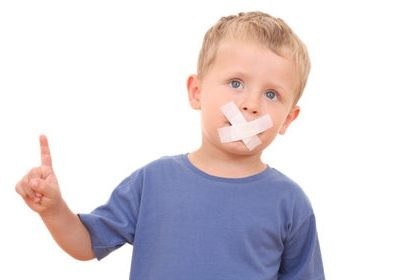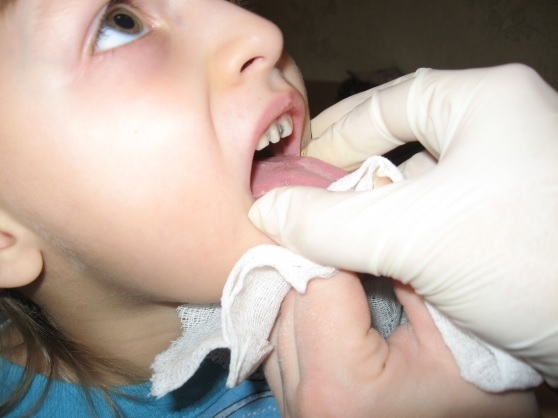Articulatory gymnastics will help in the treatment of dysarthria
content:
- reasons dysarthria
- Manifestations of disease treatment methods
- Articulating gymnastics
- Pharmacotherapy
- Massage
 language Dysarthria is against the nervous system to the manifestation of speech disorder in which treatment requires systemic pediatrician, neurologist, speech therapy. With such a disease there is an indistinct pronunciation of words, the rhythm of breathing is lost. The movements of the lips, tongue, and soft palate are thus limited, and as a result, articulation( pronunciation) is broken. An important role in the treatment plays an articulation exercises with dysarthria, which helps to develop correct speech sounds formulation removes hypertonicity, increases the speed of the motor functions. At the same time, medicamental treatment, speech therapy massage is performed.
language Dysarthria is against the nervous system to the manifestation of speech disorder in which treatment requires systemic pediatrician, neurologist, speech therapy. With such a disease there is an indistinct pronunciation of words, the rhythm of breathing is lost. The movements of the lips, tongue, and soft palate are thus limited, and as a result, articulation( pronunciation) is broken. An important role in the treatment plays an articulation exercises with dysarthria, which helps to develop correct speech sounds formulation removes hypertonicity, increases the speed of the motor functions. At the same time, medicamental treatment, speech therapy massage is performed.
Causes of dysarthria
The causes of dysarthria can be different. This disease is not independent, occurs with violations of the central nervous system( CNS).Diseases leading to dysarthria:
- cerebral palsy;
- of the brain;
- encephalitis;
- meningitis;
- trauma and CNS tumors;
- disorders of blood circulation of the brain.
Risk factors for the onset of dysarthria:
- intrauterine infection;
- prematurity;
- maternal toxicity during pregnancy;
- Rhesus-conflict;
- asphyxiation;
- craniocerebral trauma in childbirth;
- pathology of the placenta.
Manifestations of the disease symptomatology
dysarthria has disorders in pronunciation characteristic sounds of individual words and syllables. Failure to comply with the treatment methods of the disease can disrupt not only the spoken word, but also in writing, as well as fine motor skills. Symptoms of dysarthria:
- fuzzy pronunciation of words;
- nasal;
- disturbed breathing rhythm during a conversation;
- pronunciation of words with stops between syllables;
- fast fatigue from talking;
- increased salivation;
- sometimes lack of facial expression.
Possible consequences:
- violation of fine motor skills;
- difficulty in writing, reading.
Sometimes, in dysarthria, the symptoms are erased. The speech of such patients is understandable to others, but it is fuzzy, nasal, tempo accelerated or slowed down. With a worn out form, fine motor skills are broken: difficulty in lacing shoes, buttoning up buttons, drawing.
Methods of treatment
First of all, you need to treat the disease that caused dysarthria. Treatment should include the use of medication, articulatory gymnastics, speech therapy massage. Articulating
Articulating gymnastics exercises carried out in order to normalize respiration and form the correct speech. Exercises are carried out both passively and actively. Passive exercises affect the tongue and lips.
Tip! When performing, it is desirable that the child looks at himself in the mirror, and there is a relationship with the instructor.
perform Methods:
- For language:
- removal from the mouth and back;
- lifting, and then retreating( for the pronunciation of the letter "l");
- pulling the tongue alternately in the direction of the chin and nose;
- diversion of the language in different directions;
- lowering to the bottom of the mouth;
- bringing the language to the sky( for the pronunciation of the letter "p");
- wiggling the tongue to the sides for relaxation.
- For lips:
- slight pressure of the lips with fingertips;
- collect lips into a "tube"( for the pronunciation of the letter "y");
- stretching the line of the lips with the fixation of the fingers on the corners of the mouth( for the pronunciation of the letter "and");
- uplift of upper lip;
- lowering the lower lip;
- lips compression( for pronouncing the letters "m" and "n").
Active gymnastics is performed in front of the mirror, the patient repeats the mimic exercises behind the speech therapist:
- To depict "surprise": open the eyes wider and raise the brow. If necessary, you can help by raising your forehead slightly with your fingers.
- Quickly blink.
- Inflate cheeks simultaneously and alternately;Draw your cheeks.
- Add the language to the "tube".
- Lick your lips;
- Reach the tongue to the nose and chin.
- Wide smile, then put your lips together in a "tube", perform alternately.
- Opening and closing mouth with snapping teeth.
Medication treatment
In addition to articulatory gymnastics and speech therapy massage, dysarthria requires medication. Drugs are treated mainly by the disease that triggered the emergence of dysarthria. In addition, the doctor can prescribe:
- Nootropic drugs to stimulate mental work, improve memory and improve the learning process.
- Preparations for the improvement of cerebral circulation.
- Vitamins.
Massage of the tongue
 Massage of the tongue with dysarthria allows to normalize muscle tone, improve the secretory function, pronunciation of words. Massage is prescribed and performed only by a qualified specialist, more often by a speech therapist, in the absence of contraindications from the neurologist. The procedure takes place daily or every other day:
Massage of the tongue with dysarthria allows to normalize muscle tone, improve the secretory function, pronunciation of words. Massage is prescribed and performed only by a qualified specialist, more often by a speech therapist, in the absence of contraindications from the neurologist. The procedure takes place daily or every other day:
- in children under 3 years old - not more than 10 minutes;
- from 3 to 7 years - 15 minutes;
- from 7 years - 25 minutes.
Contraindications to massage:
- infectious diseases;
- stomatitis;
- vomiting;
- herpes on the lips.
To preventive measures include:
- control of pregnancy;
- prevention of craniocereberal trauma;
- Prevention of Neuroinfections.
In conclusion, it should be noted that dysarthria is a serious disease and requires comprehensive treatment. Why does dysarthria arise and how can it be treated by a doctor? Speech therapist or neurologist, which must be addressed when the first symptoms appear. The effect will be achieved with hard work, observance of all prescriptions of the doctor.
write the question in the form below:



